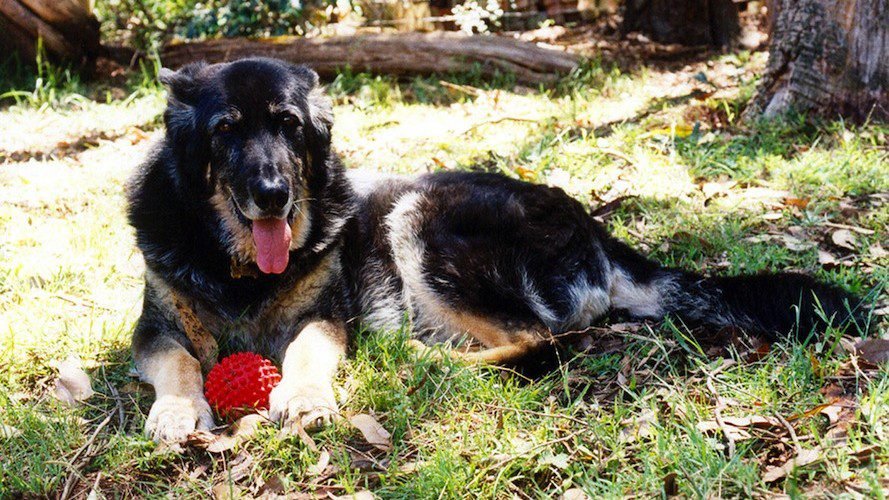Atrophy In Dogs
Canines that experience atrophy (muscle wasting) are most often showing symptoms of a larger problem. Atrophy is a symptom of many different canine diseases and should be taken very seriously. If dogs are showing any symptoms of muscle wasting it is best to get them to a veterinarian for a more thorough examination.
Degenerative myelopathy is a slow developing disease that has no cure. It most commonly affects aging German shepherds (mostly male) and on occasion other large breeds of dogs. Those affected gradually lose control over their back legs and have a swaying wobbly hind leg gait. It is rare in smaller breeds of dogs and in cats.
Although degenerative myelopathy is a spinal cord disorder, it also causes muscle wasting and loss in the hind legs. Any loss of coordination or weakness in the rear legs, should be checked out by a veterinarian. While the cause of degenerative myelopathy is unknown, it is thought to be an autoimmune disease where genetics may play a part. Vitamin B12 or E deficiency are also possible causes.
Signs Include:
- Initially a mild weakness and inco-ordination of the hindlegs
- Knuckling and scuffing of the toes of the hindlegs
- Crossing over and swaying of the rear quarters- often when turning
- Wastage of the hindleg and pelvic muscles from none use
Disseminated Aspergillosis is a fungal disease that usually affects the nasal passages and respiratory system. Dog breeds with large snouts are the ones most likely to contract aspergillosis. If the disease spreads throughout the body it is known as disseminated aspergillosis. This type can cause muscle wasting in canines. Other symptoms include weight loss, lethargy, vomiting and paralysis. Disseminated aspergillosis is treatable by veterinarians through the use of systemic antifungal drugs.
Myositis is an inflammation of the muscles and can be a sign of a more serious illness. Myositis can affect just one muscle, such as the jaw, or it can affect groups at a time. Generalised myositis, known as polymyositis, shows signs of muscle swelling followed by muscle wasting. Veterinarians can confirm whether or not a dog is suffering from myositis through a sample of tissue. Treatment is generally steroids and immunosuppressive drugs.
Thyroid Disease is a lifelong affliction that begins to affect dogs most often around puberty. The most common form of thyroid disease is autoimmune thyroiditis, which is typified by the antithyroid antibodies that appear in the canine’s blood and tissue. Muscle wasting, seizures, a dull and coarse coat and a slowed heart rate are all signs of thyroid disease.
Old age in dogs – Mild loss of muscle mass, especially the hind legs, may be seen with old age. Some muscle loss, notably on the head and the belly muscles, can signify diseases such as masticatory myositis and Cushing’s Disease. Be sure to have your vet check this out if any muscle loss is noted.
Treatments may include drug therapy, physical therapy and muscle support.
Acupuncture can be helpful for weakness, arthritis, organ dysfunction, immune system support, cancer treatment, cognitive problems and bladder or fecal incontinence.
Canine Hydrotherapy is known to help older dogs suffering from joint pain, hip dysplasia, spinal problems, knee injuries, as well as those recovery from surgery or injury. Of particular importance is the fact that movement in water provides a safe way to regain or improve movement through low impact exercise.
Massage programs help maintain muscle tone, range of motion and flexibility while decreasing the atrophy of muscle tissue and relieving the pain and discomfort of aching muscles. Massage can also address a dog’s emotional adjustment to declining ability to perform normal dog activities.
Physiotherapy can help increase mobility, increase muscular strength and decrease pain, allowing a dog to improve their function and live more comfortably, active, and mobile as they age. Treatments can be for arthritis, muscle weakness, pain, vestibular (dizziness) issues and weight management.
Prognosis for some diseases is very poor, these include degenerative myelopathy as well as those caused by cancer. Other diseases have a good prognosis with correct treatment and support especially swimming.
Dogs should be encouraged to be active as long as possible to prevent muscle atrophy.
The stronger and more active the dog is, the longer it will stay capable of walking as the paresis progresses.
Avoid excess weight.


